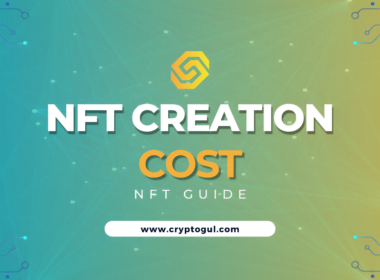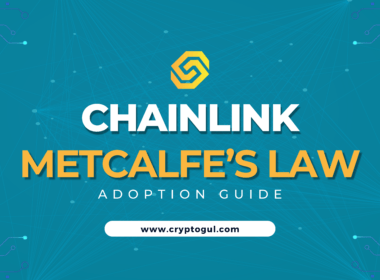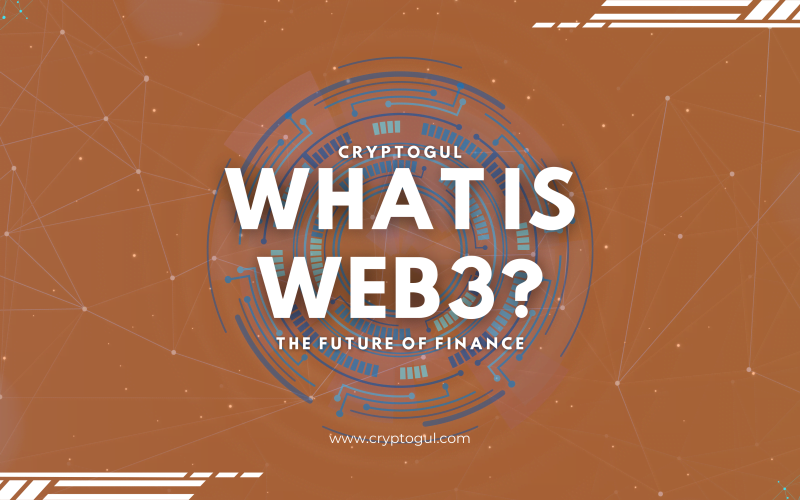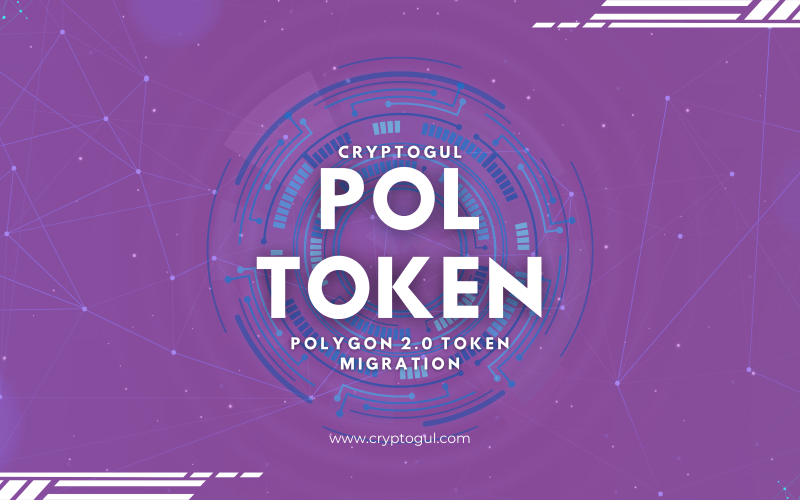Dawn breaks on a new era of the internet — Web3. This next-generation internet, marked by decentralization and built upon blockchain technology, is evolving from the world wide web as we know it. It’s a transformation that is not only reshaping the way we interact online but also rewriting the rules of the finance industry. Understanding how Web3 is shaping the future of finance is crucial, as it’s a game-changer for the financial world, offering secure, transparent, and efficient transactions without intermediaries. It’s a revolution that’s already underway, setting the stage for a future where individuals have more control over their finances than ever before.
Key Takeaways
The Web3 Revolution in Finance is a shift towards decentralization enabled by blockchain technology, empowering customers and diminishing the monopoly of banks over money.
Decentralized Finance (DeFi) provides accessible, efficient & transparent alternatives to traditional financial systems while Smart Contracts automate transactions on the blockchain.
Web3 finance technologies are enabling new business models & opportunities such as DeFi, Crypto Asset Management & Tokenization of Assets with improved security, privacy and control over assets.
The Web3 Revolution in Finance

The finance sector, traditionally dominated by banking giants and centralized financial systems, is undergoing a seismic shift. The advent of Web3 is shaping the future of finance, introducing new ways to manage, trade, and invest in digital assets. At the heart of this revolution is blockchain technology, a powerful tool that allows for secure, transparent transactions without the need for a central authority. This shift towards decentralization has significant implications for the control and security of financial transactions, offering a more equitable and accessible approach to finance.
Web3 signifies more than the future of finance; it represents the evolution of a new financial ecosystem that empowers customers and diminishes the monopoly of banks over money.
Decentralized Finance (DeFi)
Decentralized finance, or DeFi, is a key player in the Web3 revolution. By leveraging blockchain technology, DeFi provides a system of financial services that operates independently of traditional financial institutions. It’s like a financial system without borders; a global, around-the-clock, cost-effective means of transferring value via the internet, without the need for an intermediary such as a bank or payment processor.
This shift away from centralised systems brings several major advantages. From peer-to-peer lending to decentralized exchanges, DeFi is shaping the future of finance by offering more inclusive, transparent, and efficient alternatives to traditional financial systems. Some of the advantages of DeFi include:
More accessible financial services for individuals who are unbanked or underbanked
Lower transaction fees compared to traditional financial systems
Increased transparency and security through the use of blockchain technology
Greater control and ownership of assets for individuals
Opportunities for innovation and new financial products
With its potential to revolutionize the financial industry, DeFi is an exciting and rapidly growing sector that is worth exploring.
The evolution of DeFi technology has been incredibly significant. From its humble beginnings in 2017, DeFi has experienced exponential growth, with the total value locked in DeFi projects skyrocketing. This trend is expected to continue, with DeFi set to play a pivotal role in shaping the future of finance. The potential influence of DeFi on the financial industry is substantial. It’s a game-changer that could significantly expand the reach and inclusivity of the financial industry, offering a myriad of financial services to individuals and businesses across the globe.
Smart Contracts
One of the key innovations driving the Web3 revolution is the advent of smart contracts. These self-executing contracts allow for the automation of financial transactions on the blockchain, increasing efficiency and transparency in the financial system. Smart contracts can be leveraged for a variety of financial services such as:
Insurance
Crowdfunding
Escrow services
Streamlining lending, borrowing, and trading processes
Smart contracts offer numerous advantages for the finance sector, including:
Automation of financial transactions
Increased transparency
Efficiency and personalization within the financial system
Removal of intermediaries
Improved transparency in financial services by offering a public and unmodifiable record on the blockchain
All participants in a transaction can view the terms and conditions of the contract, ensuring transparency and minimizing the potential for errors.
Essentially, smart contracts function as a public notary in the digital domain, offering a trustworthy, secure, and transparent method for conducting business.
Blockchain Technology
Blockchain is the bedrock upon which the Web3 revolution is built. It’s a peer-to-peer distributed ledger that stores cryptographically timestamped transactions in an immutable public database, enabling secure and transparent data sharing. The primary characteristics of blockchain that promote secure financial transactions include:
Decentralization
Transparency
Immutability
Cryptographic security
Consensus mechanism
Blockchain technology not only improves transparency in Web3 finance but also enhances the security and privacy of financial transactions. All transactions recorded on the blockchain are transparent and can be viewed by anyone, ensuring that there is no concealed or manipulated data. This transparency increases trust and accountability in financial transactions, as all parties involved can verify and validate the transactions independently.
Also, smart contracts, grounded in blockchain technology, automate processes and minimize the need for intermediaries, advancing transparency and efficiency in Web3 finance further. Essentially, blockchain technology acts as a protective shield for your financial transactions, offering a secure, transparent, and permanent record of all your financial activities.
Financial Inclusion Through Web3

Web3 is more than just a technological revolution; it’s a movement for financial inclusion. By providing global access to financial services, Web3 has the potential to reduce social inequality and stimulate economic growth. DeFi is a Web3 technology that enables financial inclusion in the fintech industry. It enables access to financial services, reduces transaction costs, increases transparency and provides secure and anonymous identity verification..
Financial inclusion has extensive benefits, ranging from catalyzing economic growth and reducing poverty to creating a more inclusive and secure financial system.
Peer-to-Peer Lending and Payments
Peer-to-peer lending and payments are at the forefront of the Web3 revolution. By leveraging blockchain technology, Web3 facilitates decentralized lending and payment systems, which can:
Reduce costs
Remove intermediaries from cross-border transfers and financial services
Empower individuals to lend and borrow directly
Eliminate the need for intermediaries or centralized authorities
This is achieved through blockchain technology and smart contracts, which facilitate secure and transparent transactions between parties.
In the decentralized finance ecosystem, peer-to-peer lending is facilitated by connecting lenders and borrowers without the involvement of intermediaries. This communication model, enabled by smart contracts, allows individuals to lend money to others in a secure and trustless manner. Lenders can gain interest on their funds, while borrowers can access loans without relying on traditional financial institutions. Fundamentally, peer-to-peer lending in Web3 finance acts as a financial matchmaker, uniting lenders and borrowers in a secure and transparent milieu.
Notable examples of successful peer-to-peer lending platforms utilizing Web3 technology include Aave, Compound, MakerDAO, dYdX, and Fulcrum.
Digital Identity Solutions
Identity is a fundamental part of finance, and Web3 takes it to the next level with digital identity solutions. These decentralized solutions offer secure and anonymous identity verification, providing individuals without traditional identities access to financial services securely. Examples of decentralized digital identity solutions in Web3 include Spruce ID, Polygon ID, and Microsoft.
Digital identity solutions have a deep influence on financial inclusion. By giving individuals authority over their personal data and identity information, these solutions enable individuals lacking traditional identities to securely access financial services. This means that even if you don’t have a traditional bank account or credit history, you can still participate in the financial system. It’s akin to possessing a financial passport that grants access to financial services, regardless of your global location.
Web3’s decentralized nature brings increased data security and privacy to Know Your Customer (KYC) processes, furthering financial inclusion. The technologies employed for the development of Web3 digital identities include blockchain technology and decentralized identity (DID) systems.
Tokenization of Assets
Tokenization is another powerful tool in the Web3 financial toolkit. It’s the process of converting assets into digital tokens, offering a more accessible and transparent approach to investing and asset management. Asset tokenization enhances:
Accessibility
Facilitates fractional ownership
Generates liquidity and secondary markets
Reduces costs
Fosters global connectivity
Collectively, these benefits contribute to financial inclusion and the effective management of financial assets.
The process of tokenizing an asset in Web3 involves:
Issuing a digital representation of the asset on a blockchain
Converting ownership rights in a physical or digital asset into a token on the blockchain
Enabling the asset to be traded, transferred, or exchanged digitally
This process transforms a physical asset into a digital key, which can be conveniently transferred and managed on the blockchain.
Business Models and Opportunities in Web3 Finance

The rise of Web3 finance has paved the way for new business models and opportunities, including:
Decentralized Finance (DeFi)
Crypto Asset Management
Decentralized Autonomous Organizations (DAOs)
Metaverses
Web3 technologies are reshaping the financial landscape.
Decentralized exchanges (DEXs) use smart contracts and blockchain technology to facilitate peer-to-peer trading of cryptocurrencies. They offer users:
Enhanced security
Privacy
Control over their assets
Promotion of decentralization and self-sovereignty in the financial ecosystem.
Decentralized Exchanges (DEXs)
Decentralized exchanges (DEXs) are platforms that enable peer-to-peer trading of cryptocurrencies and other digital assets. They provide reduced fees and increased security compared to centralized exchanges. These platforms operate on blockchain networks and utilize smart contracts to execute lending and borrowing transactions autonomously. DEXs are like a marketplace for digital assets, where buyers and sellers can interact directly, without the need for a middleman. Some popular DEXs include:
Uniswap
SushiSwap
PancakeSwap
1inch
Curve Finance
By using DEXs, traders can have more control over their assets and avoid the risks associated with centralized exchanges.
DEXs offer a host of advantages, including robust security protocols, increased anonymity, improved access to personal assets, 24/7 operation, no KYC requirements, increased privacy, transparency, minimized counterparty risk, and lower fees. Yet, it’s worth noting that using Decentralized Exchanges (DEXs) might have some disadvantages, like an increase in the complexity of security measures, a steeper learning curve compared to centralized exchanges, possibly lower withdrawal limits and limited features, and diminished privacy and anonymity, which may restrict access to certain services.
Open Source Platforms
Open-source platforms are a cornerstone of the Web3 finance revolution. They empower developers and users alike, fostering innovation and collaboration in the financial industry. Examples of open-source platforms in Web3 finance include:
Solidity
web3.js
Hardhat
Metamask
IPFS
Uniswap
HollaEx
Storj
Giddy
Fortmatic
Moralis
Filebase
Infura
Polkadot
The Web3 finance industry incentivizes the creation of open-source platforms by facilitating financial inclusiveness, decentralization, and removing intermediaries. This decentralized model facilitates the development of open-source software and collective collaboration, thereby allowing the construction of content platforms that are more robust, comprehensive, and less subject to censorship.
Notable open-source platforms in Web3 finance include:
Ethereum
EOS
Hyperledger Fabric
NEO
Ripple
New Generation of Financial Products
Web3 finance is also giving rise to a new generation of financial products. Some examples include:
Algorithmic stablecoins: digital assets that are designed to maintain a steady price, typically through algorithmic and mechanistic means.
Decentralized insurance: insurance products that are built on blockchain technology, allowing for greater transparency and efficiency.
Tokenized investment funds: investment funds that are represented by tokens on the blockchain, providing investors with more liquidity and accessibility.
These innovative offerings are reimagining the financial landscape.
Decentralized insurance refers to an insurance model wherein the provision of coverage is enabled by a decentralized network of participants, as opposed to a centralized insurance company. Tokenized investment funds are digital assets that represent a pool of investments, including stocks, bonds, and other financial instruments. Each of these innovative products is a testament to the transformative potential of Web3 finance, offering fresh perspectives and exciting opportunities for investors and consumers alike.
Overcoming Challenges in Web3 Finance

While the potential of Web3 finance is immense, it’s not without its challenges. From regulatory complexities to security concerns and user adoption, there are several hurdles that the industry must overcome to realize its full potential. However, with the proactive measures taken by the industry in terms of regulatory compliance, security enhancements, and user education, these challenges can be addressed and turned into opportunities for growth.
Regulatory Landscape
The regulatory landscape for Web3 finance is complex and ever-changing. As the industry evolves, so too must the regulations that govern it. The impact of regulations on the global development of Web3 finance is significant. Lack of regulatory clarity can hinder innovation and the implementation of Web3 technologies in the financial sector. However, when effectively managed, regulations can ensure consumer protection, prevent fraud, and sustain the integrity of the financial system in the Web3 ecosystem.
Regulatory bodies ensure consumer protection in Web3 finance through the following measures:
Imposing licensing requirements
Providing clear regulations
Advocating for consumer protection
Promoting individual data ownership
Generating resources for consumers
Essentially, while dealing with the regulatory landscape can be tough, it is a key aspect of the Web3 finance ecosystem, guaranteeing that the industry operates within a framework that safeguards consumers and encourages fair competition.
Security and Privacy
Security and privacy are fundamental to the success of Web3 finance. With robust encryption, distributed ledger technology, and privacy-preserving solutions, Web3 finance is well-equipped to safeguard users’ financial transactions and personal data. However, as with any financial system, Web3 finance is not immune to security risks. From smart contract vulnerabilities to phishing scams and social engineering attacks, there are numerous security challenges that need to be addressed to ensure the safety and trustworthiness of Web3 financial platforms.
Distributed ledger technology offers significant benefits in terms of security. These include:
Reducing the risk of monopolization of the Internet
Providing cryptographic security
Enhancing the security of Web3 finance
Privacy-preserving solutions such as privacy transaction networks and privacy-preserving blockchains offer a further layer of protection, ensuring that users’ personal and financial data remains secure and private.
Essentially, while security and privacy represent key challenges in Web3 finance, the industry is well-furnished with the necessary tools and technologies to surmount these challenges and guarantee a secure and reliable financial ecosystem.
User Adoption and Education
For the Web3 revolution to truly take hold, it needs to be embraced by users and businesses alike. However, user adoption of Web3 finance is not without its challenges. There are several obstacles to widespread user adoption, including:
A lack of compelling apps
Issues with product-market fit
Challenges with interoperability
Inadequate awareness and education
Restrained adoption in key locations
Scalability issues
To overcome these challenges, it’s vital to focus on user education and the development of user-friendly interfaces and applications. By equipping users with the knowledge and tools required to navigate the Web3 financial landscape on the world wide web, we can encourage broader adoption and utilization of Web3 finance. Furthermore, by focusing on user experience and simplifying the complexities of Web3 technology, we can create more intuitive and accessible platforms that empower users to take control of their financial futures.
Real-World Applications of Web3 Finance

Web3 finance is not just a theoretical concept; it has numerous real-world applications that are already transforming the way individuals and businesses manage and transact their finances. From faster, cheaper, and more secure cross-border payments to accessible and transparent lending platforms and innovative asset management and trading solutions, Web3 finance is having a concrete impact on the financial world.
Cross-Border Payments
Cross-border payments are a key application of Web3 finance. Traditionally, making international payments has been a complex and costly process, fraught with high fees and slow settlement times. However, Web3 is revolutionizing this process, offering a faster, cheaper, and more secure alternative. By leveraging blockchain technology, Web3 enables direct transactions between parties, eliminating the need for intermediaries and significantly reducing transaction costs. This can be likened to a financial express lane, allowing businesses to carry out transactions with customers and partners globally, thereby simplifying the cross-border payment process and offering a seamless user experience.
Web3 platforms such as:
Ripple
Stellar
OmiseGO
Veem
Circle
offer innovative solutions for facilitating cross-border payments. These platforms leverage blockchain technology to expedite, secure, and optimize cross-border transactions, providing a more efficient and cost-effective solution for international payments. Furthermore, the inherently borderless nature of cryptocurrencies and Web3 technology enables businesses to carry out transactions with customers and partners globally, thereby simplifying the cross-border payment process and offering a seamless user experience.
Decentralized Lending Platforms
Decentralized lending platforms are another major application of Web3 finance. These platforms enable individuals to:
Lend and borrow digital assets such as cryptocurrencies
Operate without the need for traditional financial institutions
Utilize blockchain technology and smart contracts for secure and transparent transactions
Interact directly with lenders and borrowers on a peer-to-peer basis, without the requirement for an intermediary.
In a world where access to traditional banking services is not always guaranteed, decentralized lending platforms provide a much-needed alternative. They enable individuals without bank accounts to control their money and access financial services, offering a more inclusive financial system. Notable examples of successful decentralized lending platforms utilizing Web3 technology include:
Aave
MakerDAO
Compound
PhoenixDAO
Alchemix
Venus
These platforms ensure transparency by using open blockchain networks like Ethereum, which provide a transparent and verifiable record of all lending activities.
Asset Management and Trading
Web3 finance is also revolutionizing asset management and trading. Through tokenization, decentralized exchanges, and smart contracts, Web3 finance enables efficient and secure asset management and trading. Some benefits of Web3 finance in asset management and trading include:
Improved security
Trustless trading
Full control over assets
Elimination of the need for a central authority
Decentralized exchanges are a prime example of how Web3 finance is transforming asset management and trading by offering these advantages.
Smart contracts have a significant role in asset management and trading, facilitating:
Automated agreements
Enforcing transaction terms
Creating and managing digital assets
Paving the way for new business models and revenue streams
Platforms such as Balancer and Multicoin Capital specialize in asset management and trading, offering innovative solutions for managing and trading digital assets in a decentralized and permissionless way.
As such, Web3 finance offers a more transparent, secure, and efficient approach to asset management and trading, challenging traditional financial systems and offering exciting new opportunities for investors and consumers alike.
Summary
In conclusion, the rise of Web3 is revolutionizing the world of finance. From decentralized finance and smart contracts to digital identity solutions and tokenization of assets, the Web3 revolution is reshaping the financial landscape, offering a more efficient, secure, and inclusive financial system. Although challenges remain, the potential of Web3 finance is immense, promising a future where individuals have more control over their finances, and traditional banking systems are no longer the sole gatekeepers of finance. As we move forward, it is clear that Web3 is not just the future of finance; it is the future of the world economy.
Frequently Asked Questions
How does Web3 affect finance?
Web3 has empowered individuals in finance by eliminating the need for centralized control and providing access to DeFi services through dApps, giving people full control of their finances with personal crypto wallets.
How DeFi and Web 3.0 will shape the future of finance?
DeFi and Web 3.0 are revolutionizing the way we do finance, creating a more open, transparent, and accessible financial system for all. They are set to reshape the future of finance by removing barriers and inefficiencies of traditional finance.
What is decentralized finance (DeFi) and what are its advantages?
Decentralized finance (DeFi) is an alternative financial system based on peer-to-peer technology, providing global and cost-effective value transfers with near-immediate and round-the-clock processing. It offers several advantages over traditional financial systems.
What are smart contracts and how do they facilitate financial transactions?
Smart contracts are computer programs executed on blockchain networks that streamline financial services like insurance, crowdfunding, lending, borrowing, trading, and escrow services when predetermined conditions are fulfilled.
How does Web3 finance enable financial inclusion?
Web3 finance enables financial inclusion by providing access to services such as peer-to-peer lending, digital identity solutions and tokenization of assets, allowing more people to benefit from the digital economy.












